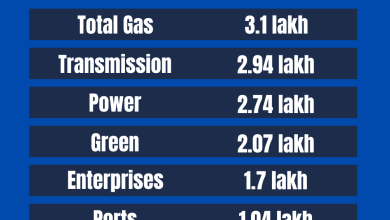Detailed Introduction to the Country of Sierra Leone: A Hidden Gem

Geography of Sierra Leone
Sierra Leone is a small country in West Africa. It has an area of about 71,740 square kilometers.
The country is bordered by Guinea to the north and northeast. Liberia is to the southeast. The Atlantic Ocean is to the southwest.
Sierra Leone has a varied landscape. It includes coastal plains, inland mountains, and tropical rainforests. The highest peak is Mount Bintumani. It stands at 1,945 meters.
History of Sierra Leone
Sierra Leone has a rich history. It was home to several indigenous tribes for thousands of years.
In the 15th century, Portuguese explorers arrived. They named the region “Serra Leoa,” meaning “Lion Mountains.”
In the late 18th century, Sierra Leone became a place for freed slaves. The British established Freetown as a settlement for freed slaves in 1787.
Sierra Leone gained independence from Britain on April 27, 1961.

Credit: www.alamy.com
Culture of Sierra Leone
Sierra Leone has a diverse culture. It is home to about 16 ethnic groups. The largest groups are the Temne and Mende.
The official language is English. However, Krio is widely spoken. Krio is a Creole language that developed from English and African languages.
Music and dance are important parts of Sierra Leonean culture. Drumming and traditional dances are common at celebrations.
Traditional clothing includes colorful fabrics and intricate designs.
Economy of Sierra Leone
Sierra Leone’s economy is based on agriculture, mining, and fishing. The country has rich mineral resources. These include diamonds, gold, and bauxite.
Agriculture employs most of the population. Major crops include rice, cocoa, coffee, and palm oil.
The fishing industry is also significant. The Atlantic Ocean provides a variety of fish and seafood.
Sierra Leone’s economy has faced challenges. These include civil war and the Ebola outbreak. However, the country is working towards recovery and growth.
Tourism in Sierra Leone
Sierra Leone is a beautiful country with many attractions. It has pristine beaches, lush rainforests, and historical sites.
Popular tourist destinations include:
- Freetown: The capital city with historical landmarks.
- Bunce Island: A historical slave trade site.
- Tiwai Island: A wildlife sanctuary with diverse species.
- Banana Island: Known for its beautiful beaches and diving spots.
Climate of Sierra Leone
Sierra Leone has a tropical climate. It has two main seasons: the dry season and the rainy season.
The dry season runs from November to April. During this time, temperatures can be quite high.
The rainy season lasts from May to October. During this period, heavy rainfall occurs, especially in July and August.
Wildlife in Sierra Leone
Sierra Leone is home to diverse wildlife. It includes many species of mammals, birds, and reptiles.
Notable animals include chimpanzees, pygmy hippos, and elephants.
National parks and reserves protect the country’s wildlife. The Gola Rainforest National Park is a significant conservation area.

Credit: www.bbc.com
Food in Sierra Leone
Sierra Leonean cuisine is flavorful and diverse. It uses local ingredients like rice, cassava, and fish.
Common dishes include:
- Jollof Rice: A spicy rice dish with vegetables and meat.
- Fufu: A starchy side dish made from cassava.
- Groundnut Stew: A peanut-based stew often served with rice.
- Fried Fish: Fresh fish fried and served with spicy sauce.
Education in Sierra Leone
Education in Sierra Leone is improving. The government is working to increase access to schools.
The education system includes primary, secondary, and tertiary levels. However, challenges like limited resources and infrastructure remain.
Healthcare in Sierra Leone
Healthcare in Sierra Leone has faced many challenges. The civil war and Ebola outbreak impacted the system.
The government and international organizations are working to improve healthcare. Efforts include building hospitals and training healthcare workers.
Languages in Sierra Leone
English is the official language of Sierra Leone. It is used in government and education.
Krio is a widely spoken Creole language. It developed from English and African languages.
Other languages include Temne, Mende, and Limba. Each ethnic group has its own language.
Religion in Sierra Leone
Sierra Leone is religiously diverse. Islam and Christianity are the main religions.
About 60% of the population is Muslim. Christians make up about 30%.
Traditional African religions are also practiced.
Sports in Sierra Leone
Football is the most popular sport in Sierra Leone. The national team is known as the Leone Stars.
Other sports include basketball, athletics, and cricket.
Sports play an important role in bringing communities together.
Transportation in Sierra Leone
Transportation in Sierra Leone includes road, air, and sea travel.
Roads connect major cities and towns. However, many roads are unpaved and can be challenging to navigate.
Freetown International Airport serves as the main airport. It connects Sierra Leone to other countries.
Seaports handle cargo and passenger ships.
Government of Sierra Leone
Sierra Leone is a constitutional republic. It has a president, a parliament, and a judiciary.
The president is the head of state and government. The parliament has two houses: the House of Representatives and the House of Chiefs.
The judiciary interprets and applies the law.
Frequently Asked Questions
What Is The Capital Of Sierra Leone?
The capital of Sierra Leone is Freetown.
Where Is Sierra Leone Located?
Sierra Leone is in West Africa.
What Is The Official Language Of Sierra Leone?
The official language of Sierra Leone is English.
What Is Sierra Leone Known For?
Sierra Leone is known for its beautiful beaches and diamond mining.
Conclusion
Sierra Leone is a country with a rich history and diverse culture. It has faced many challenges but continues to work towards a brighter future.
The country’s natural beauty, vibrant culture, and resilient people make it a unique and fascinating place.




